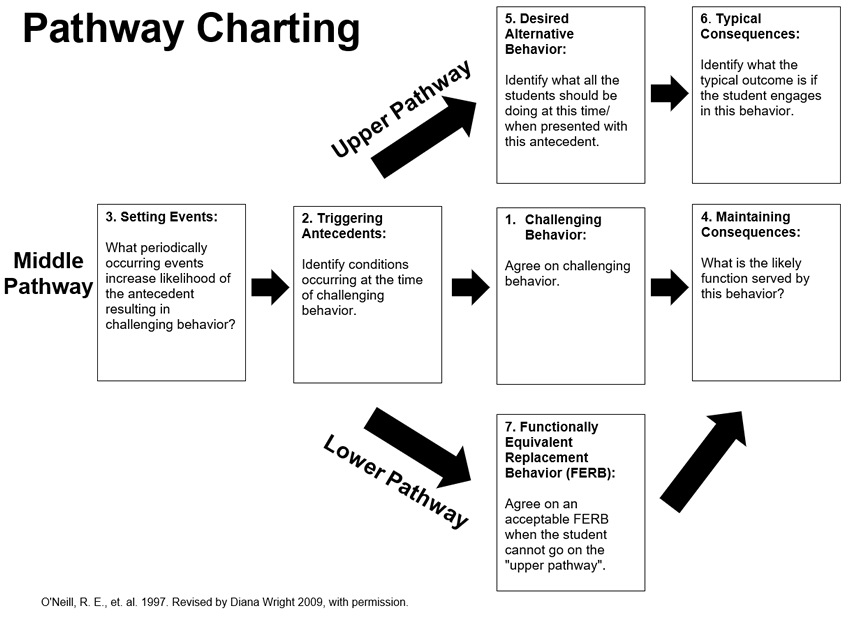What are the Three Pathways?
The Three Pathway Chart visually depcits the different "Pathways" (described below) the student can take when faced with the "Triggering Antecedent". This visual representation is completed by following the steps in Pathway Charting, which walk the team through a discussion about the challenging behavior, desired alternative behavior, and the replacement behavior.

Upper Pathway
Intervene and alter conditions to support this path
This pathway shows the general desired, positive behavior expected of all students under similar conditions. The hope is that the student will eventually be able to follow this upper pathway, given the supports provided through the behavior plan.
Middle Pathway
Redirect to either upper or lower pathway
This pathway depicts the antecedent/behavior/consequence sequence the student follows when the challenging behavior occurs; this pathway is what we hope to avoid by putting the behavior plan into place.
Lower Pathway
Teach to redirect from middle pathway
This pathway shows the tolerable functionally equivalent replacement behavior (FERB) we wish to teach and support as an alternate to the middle pathway. When the supports put in place to gain the general positive behaviors on the upper pathway are not yet sufficient, we allow the student to achieve the same outcome as the challenging behavior, only with a different form of behavior which is safe, acceptable, and appropriate for the environment.


